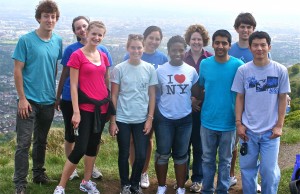In a recent issue of The Nation, Ari Kelman writes about the quickening pace of extinction. Kelman writes that when Thomas Jefferson wrote his encyclopedic Notes on the State of Virginia, he believed that extinction was biologically impossible. Since God made the world, he thought, he would not let his creations vanish. There was no evidence, he asserted (wrongly, of course) of Nature “having formed any link in her great work so weak as to be broken.”
Kelman goes on to discuss Caroline Fraser’s book, Rewilding the World, and her visits to the places where human habitation has been prevented for long periods, thus prompting a resurgence of wildness. Ironically, these places were made into no-man’s-lands by human violence:
In the wake of the cold war, for example, scientists discovered that what had been known as the Death Zone, the narrow parcel of land separating East from West Germany, was among “the most undisturbed natural areas” in Europe. Similarly, intractable strife has transformed the Korean Demilitarized Zone into an “Eden” entirely given over to wild nature, but only because it’s a no man’s land. As Fraser notes: “The 38th parallel, a border 155 miles long and 2½ miles wide, guarded by two million North and South Korean soldiers, is believed to be the best-preserved piece of land on earth. It is also the most dangerous. No human being has set foot in it in fifty-five years.”
Another one of those places is above Belfast. For more than 30 years during The Troubles, the mountain was blocked off by the British Army. The Black Mountain base figures in tales of arrest and torture; but for the most part,the hills were untraveled by humans. In 2005, to great fanfare, the mountain was reopened. It is now possible to walk amidst the red grouse, badgers, stonechats, skylark, peregrine falcons, hare and yellow gorse that flourish there.
With my DukeEngage students, I had a glorious walk up Cave Hill, north of Black Mountain, on Saturday, I had aspirations to extend the walk later in the week, starting at Black Mountain and ending at Cave Hill, in North Belfast. It is the same string of mountains, after all, and to my eye, this would make a glorious walk on the rare sunny day.
A number of people told me “no problem,” making me immediately suspicious. If it was no problem, why were there no maps?
I finally called the warden (ranger in American) this morning. He sadly, but definitively, told me that this walk was, as yet, impossible. “Private land” issues, including a police firing range.
The good news is that “wild Belfast” will continue to flourish on sections of the hills. And to see them, I’ll have to satisfy myself with combining the “virtual tour” of Black Mountain and Cave Hill.

